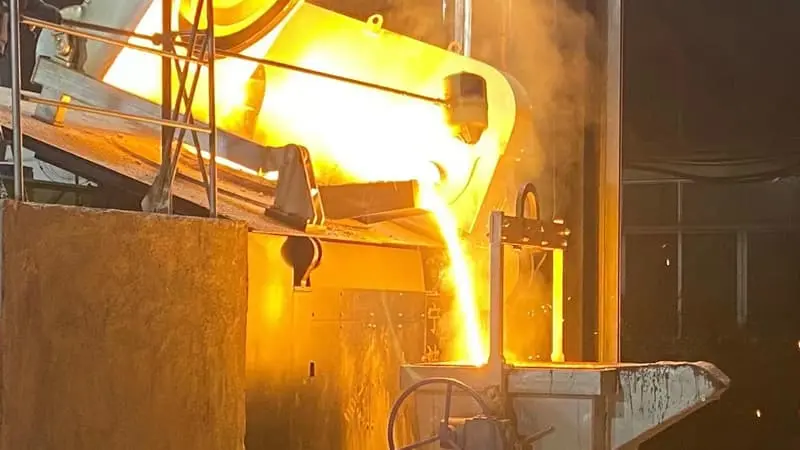
Введение:
В области металлургических достижений, the emergence of pressurized induction furnace smelting has marked a revolutionary stride. This cutting-edge steel making equipment orchestrates smelting within a high-pressure nitrogen atmosphere ranging from 0.2 к 2.0 M Pa. Building on the heating principles akin to medium-frequency induction furnaces, the pressurized induction furnace brings forth a myriad of features that redefine the landscape of metallurgy.
Heating and Melting in the Nitrogen Ambiance:
Within the pressurized induction furnace, the entire spectrum of processes unfolds amidst the embrace of high-pressure nitrogen. From the heating and melting of the charge to the subsequent phases of refining, alloying, tapping, pouring, and the ultimate cooling of the steel ingot, every stage is seamlessly executed in this controlled nitrogen environment. This distinctive characteristic sets the pressurized induction furnace apart, ensuring a cohesive and efficient smelting process.
Application in Specialty Steels:
The boosted induction furnace finds its niche in the smelting of new metal materials, particularly excelling in the production of nickel-saving special steel with a nitrogen mass fraction exceeding 0.60%. Notably, current applications have successfully produced stainless steel with a remarkable nitrogen mass fraction of 1.2%. The development trajectory includes the smelting of special tool steel and die steel with an ambitious nitrogen mass fraction of 2.0%, demonstrating the versatility and adaptability of this innovative technology.
The Role of Nitrogen in Strengthening Steel:
Central to the success of pressurized induction furnace smelting is the strategic use of nitrogen. Nitrogen emerges as a key element capable of enhancing the strength of steel without compromising its toughness and corrosion resistance. Furthermore, nitrogen assumes the role of a viable alternative to nickel, addressing concerns related to resource constraints. This groundbreaking approach leverages the latent potential of nitrogen, transforming it into a powerful ally in metallurgical processes.
Overcoming Solubility Challenges:
Traditional smelting methods, operating under normal pressure, are inherently limited in producing steel with a nitrogen mass fraction surpassing 0.60%. Beyond this threshold, nitrogen tends to form bubbles within the steel ingot, presenting a formidable challenge. Enter the pressurized induction furnace smelting process and its corresponding equipment—a dynamic solution devised to transcend the solubility constraints of nitrogen in steel. This innovation paves the way for pushing the boundaries of nitrogen content in steel production.
Заключение:
В заключение, the pressurized induction furnace smelting process stands as a testament to the relentless pursuit of excellence in metallurgy. Its characteristics, ranging from the utilization of high-pressure nitrogen to the production of specialty steels with elevated nitrogen fractions, underscore a new era in steel making technology. As this innovation continues to evolve, it promises to shape the future of metallurgical processes, opening doors to unprecedented possibilities in the realm of material science.
